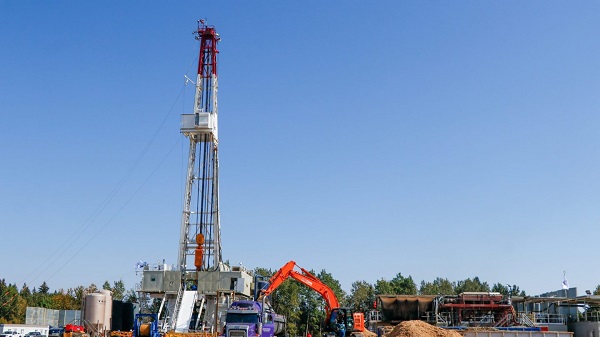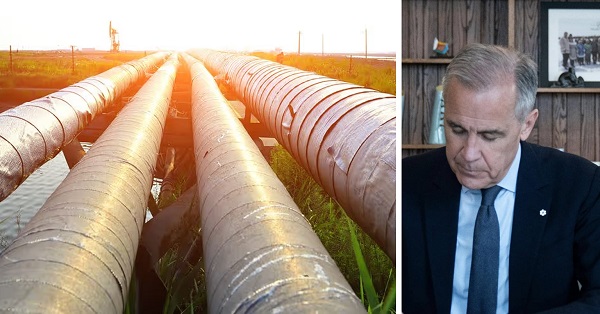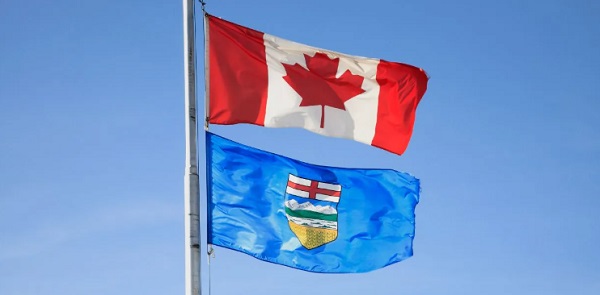Business
Lower taxes will help increase living standards for Canadian families

From the Fraser Institute
By Jake Fuss and Grady Munro
According to a new poll from RBC, nearly half (48 per cent) of Canadians can’t maintain their standard of living due to rising costs. These polling results should come as no surprise; recent research has shown that Canadian living standards are in a historic decline.
Governments across the country should take note, and immediately cut the largest expense for families—taxes.
Consider this. Gross domestic product (GDP) is the value of all goods and services produced in the economy, and is the most widely used measure of economic prosperity. And by measuring GDP on a per-person basis (and adjusting for inflation), we can track how living standards of Canadians change over time.
According to the latest data from Statistics Canada, as of September 2024, GDP per person was $58,601 compared to $59,905 in June 2019 (after adjusting for inflation). And since the fourth quarter of 2022, living standards have fallen in seven of the last eight quarters.
The driving factor behind this decline in living standards is Canada’s sluggish economic growth in recent years. Moreover, as highlighted in the poll, inflation over the last several years has left Canadians weary and struggling to cope with the elevated cost of necessities such as food and housing.
Again, if governments want to help improve living standards, they should reduce taxes and leave more money in the pockets of Canadian families.
In 2023 (the latest year of comparable data), the average Canadian family spent a larger share of its income on taxes (43.0 per cent) than on food, shelter and clothing combined (35.6 per cent). In other words, taxes are the largest single expense for Canadian families, and governments have the power to lower this expense to help families make ends meet.
Tax reductions would also benefit the overall economy and increase opportunities for workers. Across a variety of income levels ranging from $50,000 to $300,000 a year, Canadians in nearly every province face a higher combined (federal and provincial/state) personal income tax rate than Americans in virtually every U.S. state.
Of course, jurisdictions compete to attract and retain high-skilled workers such as doctors, engineers and entrepreneurs because these individuals contribute greatly to overall economic growth. By maintaining higher tax rates than U.S. states, provinces remain at a competitive disadvantage in attracting these workers. Lowering both federal and provincial income tax rates would improve Canada’s competitiveness and help increase economic growth.
A stagnant economy and rising cost of living are reducing living standards while stretching the finances of Canadian families. This budget season, governments from coast to coast should lower taxes to improve the economy and put more money back in the pockets of hard-working Canadians.
Alberta
Emissions Reduction Alberta offering financial boost for the next transformative drilling idea

From the Canadian Energy Centre
$35-million Alberta challenge targets next-gen drilling opportunities
‘All transformative ideas are really eligible’
Forget the old image of a straight vertical oil and gas well.
In Western Canada, engineers now steer wells for kilometres underground with remarkable precision, tapping vast energy resources from a single spot on the surface.
The sector is continually evolving as operators pursue next-generation drilling technologies that lower costs while opening new opportunities and reducing environmental impacts.
But many promising innovations never reach the market because of high development costs and limited opportunities for real-world testing, according to Emissions Reduction Alberta (ERA).
That’s why ERA is launching the Drilling Technology Challenge, which will invest up to $35 million to advance new drilling and subsurface technologies.
“The focus isn’t just on drilling, it’s about building our future economy, helping reduce emissions, creating new industries and making sure we remain a responsible leader in energy development for decades to come,” said ERA CEO Justin Riemer.
And it’s not just about oil and gas. ERA says emerging technologies can unlock new resource opportunities such as geothermal energy, deep geological CO₂ storage and critical minerals extraction.
“Alberta’s wealth comes from our natural resources, most of which are extracted through drilling and other subsurface technologies,” said Gurpreet Lail, CEO of Enserva, which represents energy service companies.
ERA funding for the challenge will range from $250,000 to $8 million per project.
Eligible technologies include advanced drilling systems, downhole tools and sensors; AI-enabled automation and optimization; low-impact rigs and fluids; geothermal and critical mineral drilling applications; and supporting infrastructure like mobile labs and simulation platforms.
“All transformative ideas are really eligible for this call,” Riemer said, noting that AI-based technologies are likely to play a growing role.
“I think what we’re seeing is that the wells of the future are going to be guided by smart sensors and real-time data. You’re going to have a lot of AI-driven controls that help operators make instant decisions and avoid problems.”
Applications for the Drilling Technology Challenge close January 29, 2026.
armed forces
Global Military Industrial Complex Has Never Had It So Good, New Report Finds


From the Daily Caller News Foundation
The global war business scored record revenues in 2024 amid multiple protracted proxy conflicts across the world, according to a new industry analysis released on Monday.
The top 100 arms manufacturers in the world raked in $679 billion in revenue in 2024, up 5.9% from the year prior, according to a new Stockholm International Peace Research Institute (SIPRI) study. The figure marks the highest ever revenue for manufacturers recorded by SIPRI as the group credits major conflicts for supplying the large appetite for arms around the world.
“The rise in the total arms revenues of the Top 100 in 2024 was mostly due to overall increases in the arms revenues of companies based in Europe and the United States,” SIPRI said in their report. “There were year-on-year increases in all the geographical areas covered by the ranking apart from Asia and Oceania, which saw a slight decrease, largely as a result of a notable drop in the total arms revenues of Chinese companies.”
Notably, Chinese arms manufacturers saw a large drop in reported revenues, declining 10% from 2023 to 2024, according to SIPRI. Just off China’s shores, Japan’s arms industry saw the largest single year-over-year increase in revenue of all regions measured, jumping 40% from 2023 to 2024.
American companies dominate the top of the list, which measures individual companies’ revenue, with Lockheed Martin taking the top spot with $64,650,000,000 of arms revenue in 2024, according to the report. Raytheon Technologies, Northrop Grumman and BAE Systems follow shortly after in revenue,
The Czechoslovak Group recorded the single largest jump in year-on-year revenue from 2023 to 2024, increasing its haul by 193%, according to SIPRI. The increase is largely driven by their crucial role in supplying arms and ammunition to Ukraine.
The Pentagon contracted one of the group’s subsidiaries in August to build a new ammo plant in the U.S. to replenish artillery shell stockpiles drained by U.S. aid to Ukraine.
“In 2024 the growing demand for military equipment around the world, primarily linked to rising geopolitical tensions, accelerated the increase in total Top 100 arms revenues seen in 2023,” the report reads. “More than three quarters of companies in the Top 100 (77 companies) increased their arms revenues in 2024, with 42 reporting at least double-digit percentage growth.”
-

 Energy1 day ago
Energy1 day agoCanadians will soon be versed in massive West Coast LPG mega-project
-

 Alberta2 days ago
Alberta2 days agoNet Zero goal is a fundamental flaw in the Ottawa-Alberta MOU
-

 Food2 days ago
Food2 days agoCanada Still Serves Up Food Dyes The FDA Has Banned
-

 Alberta2 days ago
Alberta2 days agoKeynote address of Premier Danielle Smith at 2025 UCP AGM
-

 Addictions2 days ago
Addictions2 days agoManitoba Is Doubling Down On A Failed Drug Policy
-

 COVID-192 days ago
COVID-192 days agoFDA says COVID shots ‘killed’ at least 10 children, promises new vaccine safeguards
-

 Daily Caller1 day ago
Daily Caller1 day agoTom Homan Predicts Deportation Of Most Third World Migrants Over Risks From Screening Docs
-

 C2C Journal18 hours ago
C2C Journal18 hours agoLearning the Truth about “Children’s Graves” and Residential Schools is More Important than Ever






